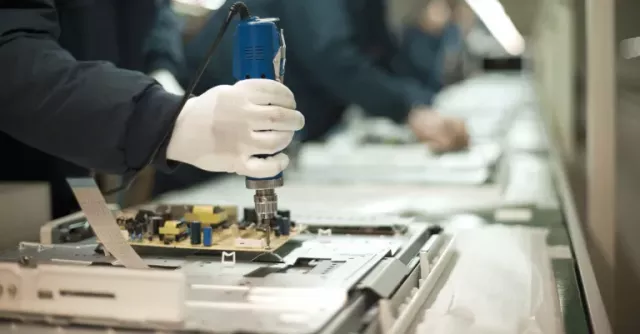Business Continuity Plans That Protect Production & Quality

What Is a Business Continuity Plan?
A BC plan is a system every manufacturer should follow to prevent and recover potential threats. The plan ensures employees and assets are safe and can function quickly after a disaster.
What Are the BC Plans That Protect Production and Quality of Goods?
There are two types of BC recovery plans that protect the production and quality of goods:
- Natural disaster recovery plan: This plan helps businesses recover from earthquakes, tornadoes, floods, and other environmental disasters.
- Manufactured threats: Such plans serve as protection from terrorism, cyberattacks, or sabotage.
In both cases, you must have a plan to protect your facilities, equipment, and team members. That way, they can continue operations at their normal level of productivity even after a disaster has occurred.
What Do Business Continuity Recovery Plans Cover?
You should customize a recovery plan to your business’s needs. However, these are the general sections that appear in your BC plan.
1. Testing and Training
BC plans aren’t only theoretical — they must be robust enough to implement. Therefore, manufacturers can check their plans by testing and exercising them.
That is where you can use realistic scenarios to test your team’s response to a disaster. By doing so, you identify areas for improvement, allowing you to take action to improve the plan before a disruption occurs.
2. Plan Reevaluation
If your business undergoes significant changes, you should reevaluate your action plan and update it accordingly. This may include updating information to reflect changes in personnel or expanding certain sections. Once you’ve coordinated the updates, you should indicate any staff changes and explain when the next evaluation period will occur.
3. Personnel
Personnel is key to a business continuity plan. This team offers guidance and helps make decisions in an emergency. Additionally, you should include personnel such as stakeholders, executives, and employees.
To ensure you can resume normal business operations, you should appoint a team leader who understands all aspects of disaster recovery. Then, you should assign the roles and responsibilities of key personnel.
For example, suppose there is a cyberattack on your company. You would need someone with access to your network to respond to the breach when IT managers are unavailable.
4. IT Continuity
The manufacturing industry heavily relies on data and technology. Currently, no overarching or mandatory cybersecurity regulations exist for the manufacturing industry, which can unfortunately mean lax security standards. Following the NIST Cybersecurity Framework, which can help protect both IT and OT, and following CMMC regulations, which currently apply only to Department of Defense contractors but could soon extend to suppliers of multiple other federal departments, can boost your security standards to help prevent destructive cyberattacks.
However, even if you never suffer a cyberattack, natural disasters can still disrupt your operations and completely devastate them. Your IT department must always have a BC plan, as one survey found over 72% of businesses don’t meet their recovery expectations.
Typically, this occurs without a solid recovery plan. Therefore, you must ensure your BC plan outlines data backup processes and technologies to restore your IT infrastructure.
5. Asset Management
A BC plan should also include the recovery plan for your equipment and asset management. Take inventory of all equipment and assets and ensure they are identifiable. You must consider how you’ll replace them if they are destroyed or inaccessible.
6. Communication
Clear communication is necessary for every part of your business’s interactions. Therefore, the BC plan should indicate how you’ll convey information when disaster strikes. The plan should outline how personnel will reach out when other modes of communication are down. In critical moments, you must make decisions quickly.
7. Document Storage
In addition to digital files, there must be a plan to protect and restore essential physical files. Manufacturing companies have crucial information in their documents. A plan will tell you what to do if these get lost in a flood or fire. For instance, some manufacturers will back up copies in a remote location.
8. Medical Response
Whether the disaster is natural or manufactured, you need a plan to respond to life-threatening situations. In severe cases where a worker becomes injured, you need to consider the kind of care you’ll provide on-site.
For instance, where would you keep emergency supplies, and how would someone access them? Or, where will you take your employees to receive urgent care?
9. Contingency Locations
Certain impacts can be so disastrous that manufacturers must find a temporary site to continue their operations. Your BC plan should have the location of where your work will resume and how long it will take to get it running.
Additionally, your plan should have contingency locations for your IT department and data center in case of downtime. This is especially important for privacy and data regulations.
Use a BC Plan to Prepare for All Disasters
BC plans are a vital part of the manufacturing industry. Threats and disruptions can mean increased costs and loss of revenue, which can impact other businesses down the line.
Unfortunately, manufacturers can’t rely on insurance alone, as it doesn’t cover all the costs. But when they have a sound BC plan to minimize downtime, they can gear their company toward a speedy recovery and operational success.
Zac Amos is the Features Editor and a writer at ReHack, where he loves digging into business tech, cybersecurity, and anything else technology-related. You can find more of his work on Twitter or LinkedIn.


